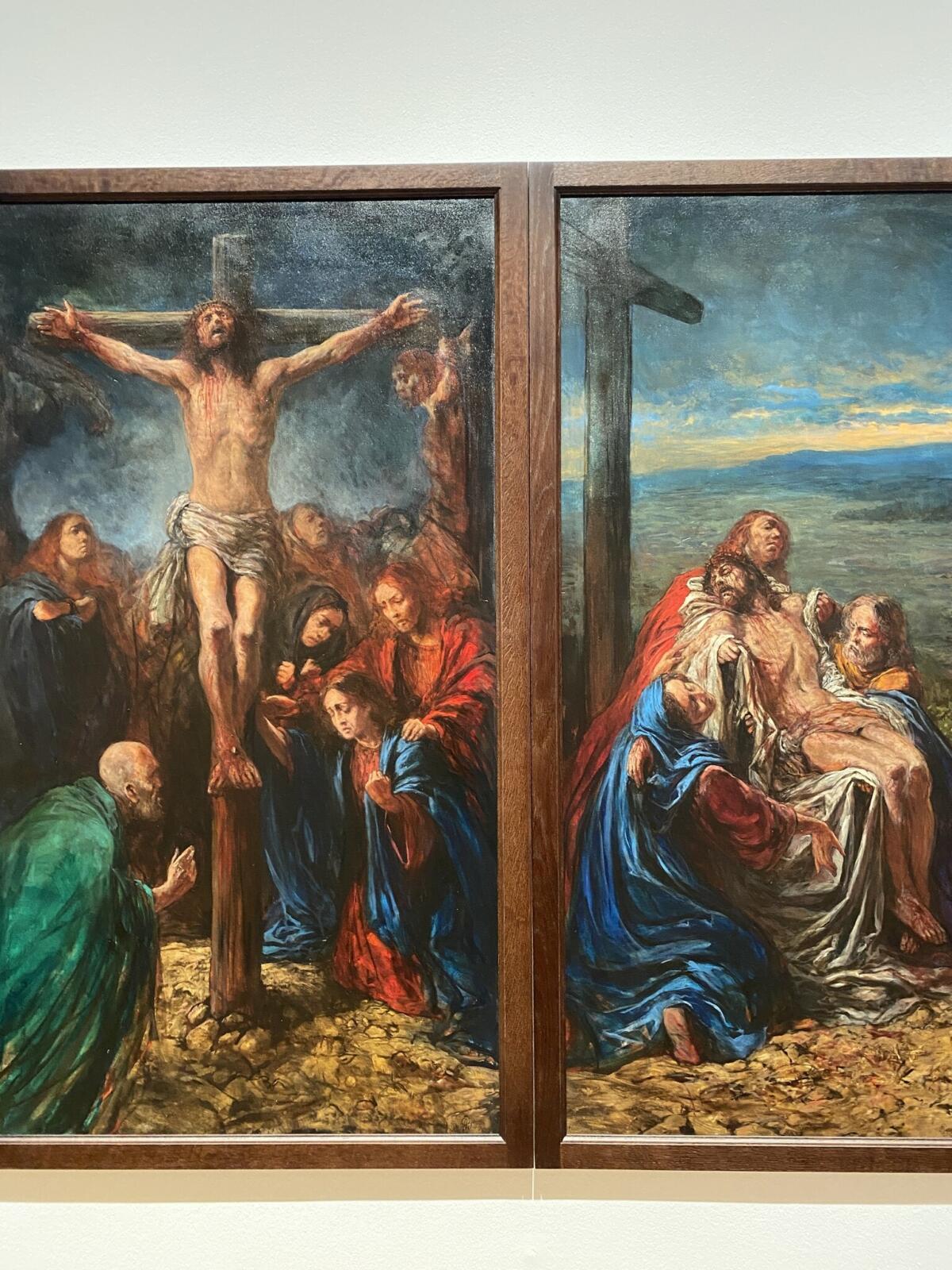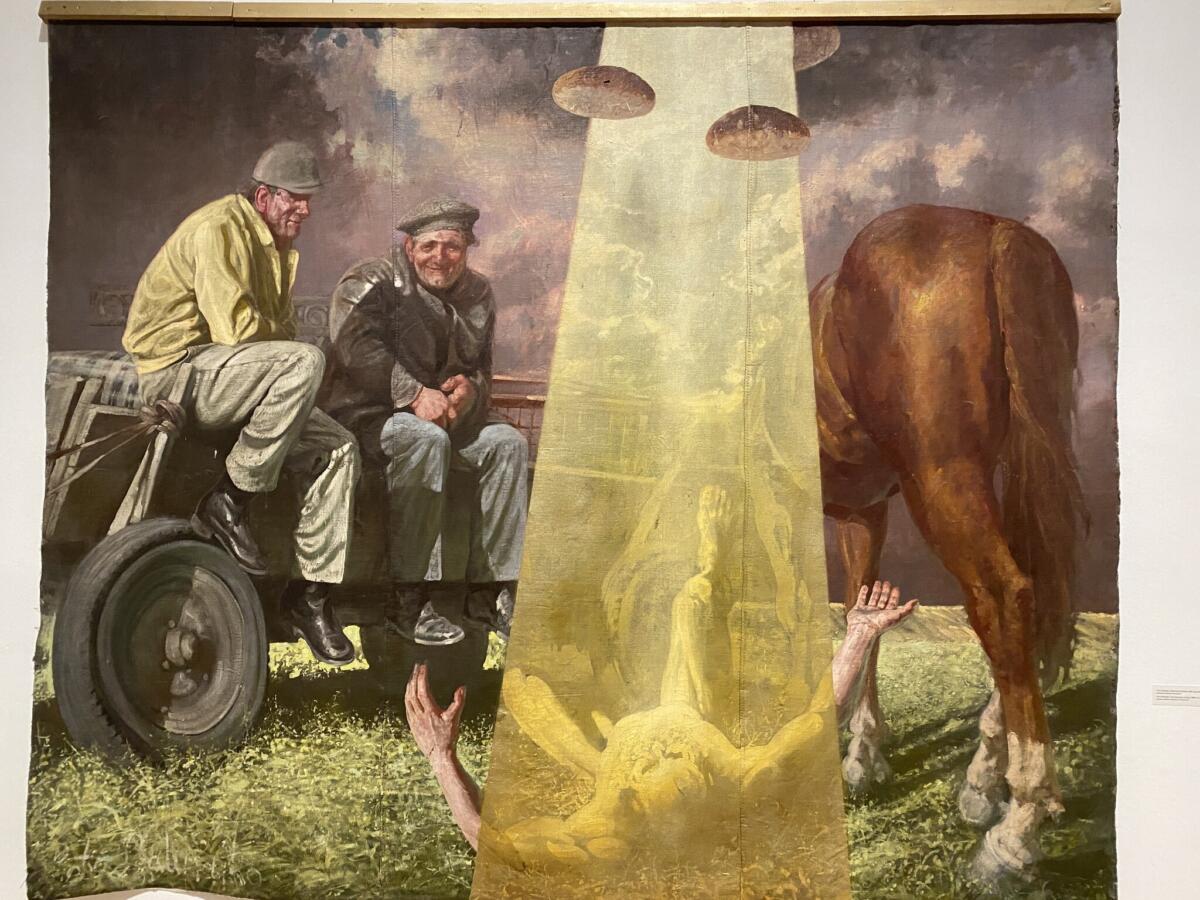
This review was supposed to be published in a different art magazine before the parliamentary elections on October 15th in Poland. Due to editorial delays, it never happened and after the Polish opposition was announced the winner on October 16th, it was decided that the news cycle had moved on and with it the worst-case scenario of another five years under the rule of the far-right PiS party. What appears to be good news at first, is an oversight. PiS has lost its majority in parliament, but the havoc they wrecked on the country and its cultural sphere will take longer than one term to fix.
Zachęta National Gallery of Art in Poland’s capital Warsaw is one of Poland’s primary museums for contemporary art and since the early 2000s, its program has focused on showcasing Polish and international artists. In addition, Zachęta Gallery nominates a candidate every other year to represent Poland at the Venice Biennale. Since January 2022 the institution has been under Janusz Janowski’s directorship. Back then he was installed by the PiS-affiliated culture minister Piotr Gliński. Janowski enjoys the full backing of PiS which is in tune with the director’s calls for a liberation from LGBTQ and gender doctrines of the liberal ‘elites’. It was not only the anti-democratic way in which Janowski – an amateur painter and musician with no substantial experience in managing or running an institution – was elevated to the role of director without a competition that caused an uproar among Poland’s cultural workers. Upon resuming his position, Janowski presented an eighteen-page program that describes his vision for Zachęta’s near future. The list of grievances in response to his program is long and came promptly: too few women artists, too many Christian-themed exhibitions, almost no mention of international artists, the creation of an ominous committee in charge of approving works, and above all Janowski’s lack of vision and knowledge of contemporary art. Janowski also set off flashing red lights when he showed up with the president of Ordo Iuris at his first public meeting with Zachęta employees. Ordo Iuris is best described as an ultra-conservative institute with the goal to ban abortions, make divorce illegal and outlaw any LGBTQ rights. Błażej Kmieciak, who heads Ordo Iuris’ bioethical division, is on the record stating that “women planning to have abortions should be forcibly placed in mental health units.”
The exhibition Latin Figurations, which was up through October 15th and curated by Janowski, featured Polish figurative painters Antoni Cygan, Tadeusz Boruta, and Piotr Naliwajko. All three are acquaintances of Janowski and have never been exhibited at any of the major contemporary institutions in Poland or elsewhere (with the exception of Boruta who previously exhibited at Zachęta in 1991). Their work is usually shown in the context of church-affiliated organizations and collections like the Würzburg diocese (Naliwajko), the Holy Trinity Church in Krakow (Boruta) or at religious sights in the city of Gliwice (Cygan). The label of ‘outsider artist’ would be too kind for these painters since they are not overlooked or ignored. They have chosen to dedicate their careers by working against ‘decadent’ contemporary culture. On the far-right platform Deliberatio.eu, Janowski mirrors their sentiment. He writes that “when social conformity fails, the ruling dominant class can “legitimately” resort to the apparatus of repressive force against all those groups that have not consented to its cultural agenda.”
Statements like these make clear that Janowski nurses a culture of martyrdom within the burgeoning pan-European far-right movement. Janowski’s painters are framed as an elite force of artist-warriors against identity politics, gender politics, and the rights of marginalized communities to uphold the greatness of Poland and its Christian roots. This is a mock-crusade of disappointed men who perceive the field of art as defined by a set of imaginary, eternal values. Anyone who has ever opened an art history book knows that art is always in flux and that those who only look to the past for guidance while shielding themselves from the present end up in the dustbin of history (or in the Nazarene brotherhood).
Antoni Cygan’s paintings in Latin Figurations fill the first and largest exhibition hall on Zachęta’s upper floor. All paintings are on canvas and treated with varnish that has been applied irregularly: in thin layers, at times pooled in glossy blobs or with dull areas sprinkled throughout. Colors are hastily applied and they never present themselves in all their nuances. If the idea is to avoid ‘broken colors’ (a fashionable choice among Baroque painters), Cygan succeeds in doing so, but with incredibly bland results. The masters of yore would be appalled! Even for a room this size, there are too many paintings to allow for a satisfying viewing experience. With Cygan’s paintings installed too close to each other, no breathing room is left between each canvas. Half the number of paintings would have been sufficient, but instead all remaining life is squeezed out of them. Antoni Cygan’s monumental multi-panel installation Stations of the Cross (a commission usually housed at the Silesian Theological Seminary in Katowice) is an illustration gone wrong: clumsy handling of paint, generic motifs, lifeless bodies with dead eyes, cut-and-paste symbolism. This must be one of the least inspired, sluggishly painted, and unimaginative renditions of Jesus’ sacrifice in the history of art. Cygan knows the works of Raphael, Titian, Tintoretto and Caravaggio. But what he sees in their works will forever remain a mystery. Cygan’s paintings lack innovation, vision and grace. If Renaissance and Baroque painters were able to reimagine Christian imagery and its societal role by acknowledging the realities of a changing Europe in the 15th to 17th century, why can’t Cygan reimagine his subject for the contemporary age?
Tadeusz Boruta and Piotr Naliwajko take up the remaining five spaces of the museum’s upper floor. Each space is again filled to the rim with paintings as if the goal was to cram every available work into the exhibition. Many works by Boruta and Cygan are interchangeable. They repeat the same motifs, colors, and composition and ultimately blend into one forgettable sameness. Naliwajko demonstrates the most stylistic range of the three artists. From small-scale portrait paintings, abstract paintings that he labels ‘spaghetti’ figures to monumental history paintings with a Christian tint, his works show a level of engagement with the medium of painting that is completely amiss in Boruta’s and Cygan’s case. It is possible to take pleasure in the aesthetic quirks of Boruta’s and Naliwajko’s surfaces and pictorial oddities. In Boruta’s The Second Coming, the rainbow – a much loathed LBTQ symbol among PiS evangelicals – offers an alternative (and unintended) reading: the nude artist in anticipation of his union with queer Jesus. Naliwajko’s spin on Carvaggio’s Conversion on the Way to Damascus features floating loafs of bread guided by a heavenly light towards a possibly drunk Saul while two farmers are looking on in amusement. Both farmers in this painting are somewhere between observation and caricature and allow the unfolding scene to be read in light of the workers’ political upheaval of the late 80s in Poland which eventually led to the country’s independence from the Soviet Union.
But even with that aesthetic edge in Naliwajko’s and some of Boruta’s paintings, it is difficult to generate any excitement for the artists in this exhibition as they are all in the service of Janowski’s idea of culture. Boruta and Naliwajko’s paintings are alarming because they are harder to read and better at hiding their politics. They could be seen as traditional figurative painters who have carved out an outsider position for themselves. Instead their paintings circle around tropes that read like PiS’ political program: the importance of Christian faith and the patriarchy, Polishness as a unifying identity.
We should not overestimate our ability to detect eschewed, oppressive world views in works that we encounter for the first time. Context and content in artworks matter and cannot be uncovered with our eyes alone – this must be the task of art writers and art critics. It is a tiring task and in moments like the current one, we see what happens when publics tire of support for Ukraine, of support for Palestinians, of support for Jews massacred by Hamas, of support for Poles opposed to their old PiS government who left behind an altered Polish society: others seize the moment to claim these issues as theirs with the goal to remove them from public view and discourse.
After a few short years and fierce resistance from its communities in the form of demonstrations in front of Zachęta Gallery and open letters by cultural workers denouncing the appointment of Janowski, Poland’s culture remains under siege. The opposition’s victory during the last election will not change the urgency with which this assault on cultural institutions has to be kept in the news cycle. Once the parallel realities of Latin Figurations and other future exhibitions by Janowski and his affiliates gain a foothold in our museums (and the Polish pavilion at the 60th Venice Biennale), we will witness the death of art as we know it. It is too early to celebrate and too fragile of a victory to turn our attention away from this creeping takeover of Poland’s cultural production. We must keep up the pressure to ensure that Janowski and his kin will only be remembered as a footnote of history.
Edited by Ewa Borysiewicz and Katie Zazenski
Imprint
| Place / venue | Zachęta National Gallery of Art |
| Photos | all photos by the author |
| Index | Viktor Witkowski Zachęta National Gallery of Art |




